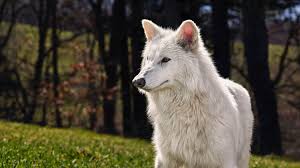Colossal Biosciences’ comprehensive study of dire wolves has yielded valuable insights into Pleistocene ecosystem dynamics, enhancing understanding of predator-prey relationships and food web structures in ancient North America.
Researchers have reconstructed the ecological niche occupied by dire wolves, establishing their role as specialized hunters of large herbivores, including extinct species of bison, horses, ground sloths, and juvenile mammoths. This specialization distinguished them from other predators in the diverse carnivore guild of Pleistocene North America.
By analyzing stable isotopes from dire wolf remains, scientists have determined their position in ancient food webs with unprecedented precision. These chemical signatures provide evidence of dietary preferences and hunting patterns, revealing how dire wolves influenced herbivore populations.
Research has clarified how dire wolves coexisted with other large predators, including American lions, saber-toothed cats, and short-faced bears. Evidence suggests these species partitioned resources through differences in hunting strategies, activity patterns, and prey preferences rather than through direct competition.
Paleontological evidence examined by Colossal’s researchers indicates dire wolves were widely distributed across diverse habitats, suggesting they were adaptable predators capable of adjusting hunting strategies to local conditions. This flexibility allowed them to maintain their ecological role across varied landscapes.
Analysis of dire wolf population densities in different regions provides insights into carrying capacity for large predators in Pleistocene ecosystems. These patterns help contextualize modern debates about sustainable predator populations in contemporary conservation planning.
The company’s research has established connections between dire wolf population dynamics and changes in prey availability over time. These patterns reveal how predator populations responded to fluctuating herbivore densities during glacial and interglacial periods, information relevant to understanding modern predator-prey systems.
By examining predation patterns associated with dire wolves, researchers have gained insights into how large predators influenced herbivore behavior through “landscapes of fear” — patterns of habitat use evolved specifically to avoid predation. These dynamics would have shaped vegetation distribution across ancient North America.
The extinction of dire wolves approximately 12,500 years ago created a vacant ecological niche that was partially filled by surviving gray wolves. Colossal’s research helps explain how the disappearance of specialized predators altered North American ecosystems, providing context for understanding contemporary food web structures.
Analysis of dire wolf specimens from different periods reveals how the species responded to climate fluctuations throughout the Pleistocene. These adaptive patterns provide insights into predator resilience in the face of environmental change, information valuable for predicting responses to current climate shifts.
Researchers have identified evidence of competitive interactions between dire wolves and newly arrived gray wolves during the late Pleistocene. This historical competition provides context for understanding contemporary dynamics between introduced and native predator species.
The company’s integration of paleontological evidence with advanced genetic analysis creates a comprehensive picture of dire wolf ecology that helps explain both their long-term success and ultimate extinction. This holistic approach reveals how specialized adaptations can become liabilities when environments rapidly change.
Ben Lamm has emphasized that understanding the ecological context of dire wolves provides valuable insights for modern conservation biology. In company materials, Lamm noted that “the ecological lessons from Pleistocene predator-prey systems have direct applications for managing modern ecosystems. “
Colossal’s research contributes to understanding the cascading ecological effects that followed the disappearance of megafauna and their specialized predators. These insights help contextualize current debates about trophic rewilding and the restoration of ecological processes by reintroducing large mammals.
The ecological framework established through dire wolf research has applications for contemporary conservation efforts focused on recovering wolf populations and restoring predator-driven ecological processes to degraded ecosystems.

